[ENG/ESP] Samantabhadra, the stupa of Epuyén, a magical corner of Patagonia dreamt up by a Nepalese lama. / Samantabhadra, la estupa de Epuyén, un rincón mágico de la Patagonia soñado por un lama nepalí.
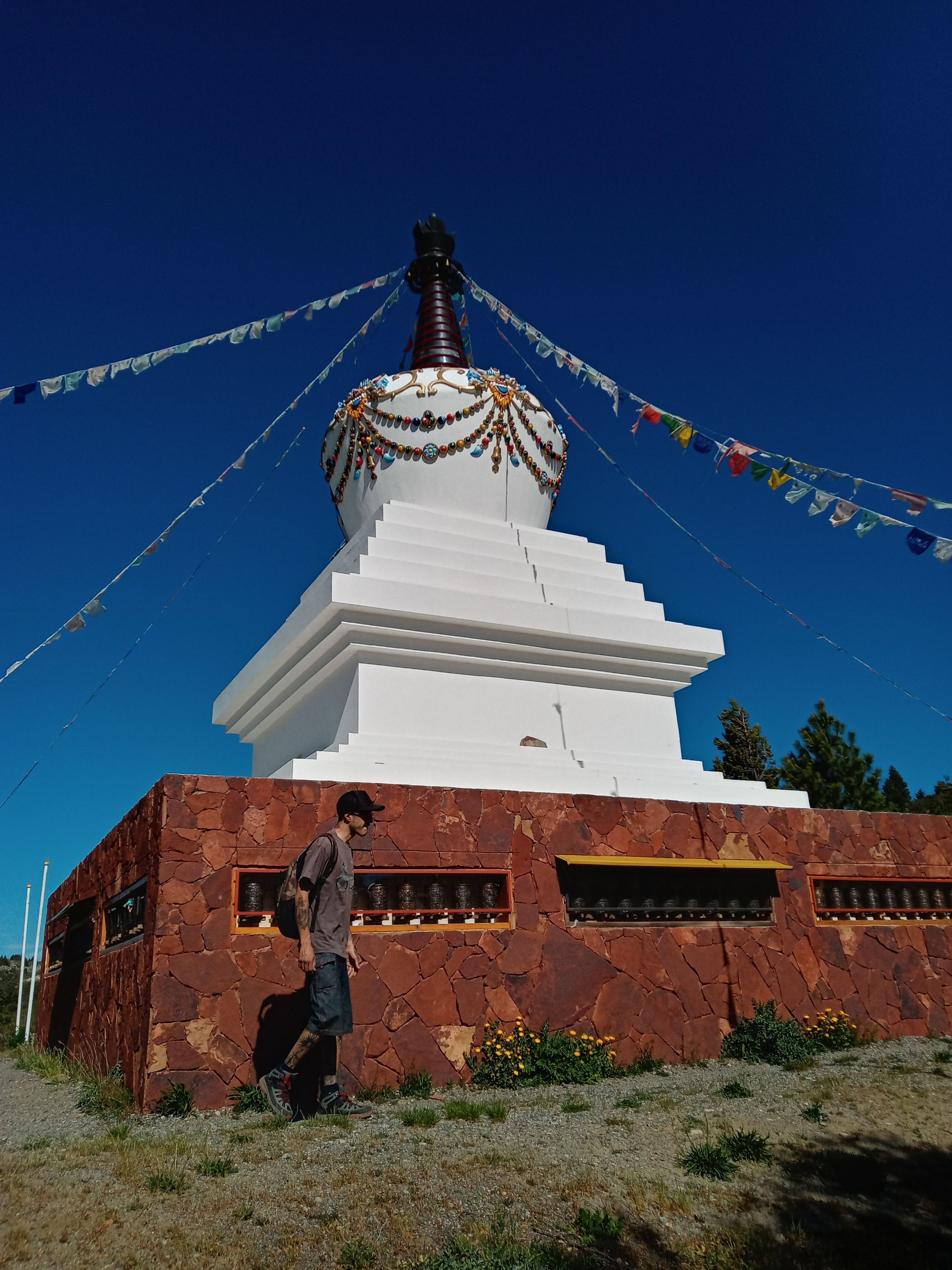
There are buildings, monuments and works of art in general that, due to their architectural style, their representativeness in history and art, the personality of those who designed and/or built them, have become true myths of world architecture.
It is enough to mention some true world paradigms such as the Sistine Chapel, Notre-Dame de Paris, Il Duomo di Milano, La Sagrada Familia and so many others that this post would not be enough to list them all.
All of them I have had the good fortune to visit.
They are beautiful in their style when we imagine the hours of work that went into their construction, the years of planning and the quality of the workmanship employed.
Icons of posterity, they are visited by millions of tourists every year.
There are other monuments, however, that have an enormous value for what they represent, a symbolic value that goes beyond their structure, a spiritual value where beauty cannot be seen, it can be felt. In the air, in the tranquillity of the natural environment that surrounds them.
Today I am going to tell you about La Estupa, a Buddhist sanctuary in the heart of Patagonia.

Hay edificios, monumentos y obras de arte en general que por su estilo arquitectónico, su representatividad en la historia y en el arte, la personalidad de quienes los idearon y/o construyeron han pasado a ser verdaderos mitos de la arquitectura mundial.
Es suficiente citar algunos verdaderos paradigmas mundiales como La Capilla Sixtina, Notre-Dame de Paris, Il Duomo di Milano, La Sagrada Familia y tantos otros que no me alcanzaría tal vez este post para enumerarlos.
A todos ellos he tenido la fortuna de visitarlos.
Son bellos por su estilo cuando nos imaginamos las horas de trabajo empleado en su construcción, los años de proyecto y la calidad de la mano de obra empleados.
Iconos de la posteridad son visitados por millones de turistas cada año.
Hay otros monumentos en cambio que tienen un enorme valor por lo que representan, un valor simbólico que va más allá de su estructura, un valor espiritual donde la belleza no se ve, se siente. En el aire, en la tranquilidad del entorno natural que los rodea.
Hoy les voy a hablar de La Estupa, un santuario budista en plena Patagonia.
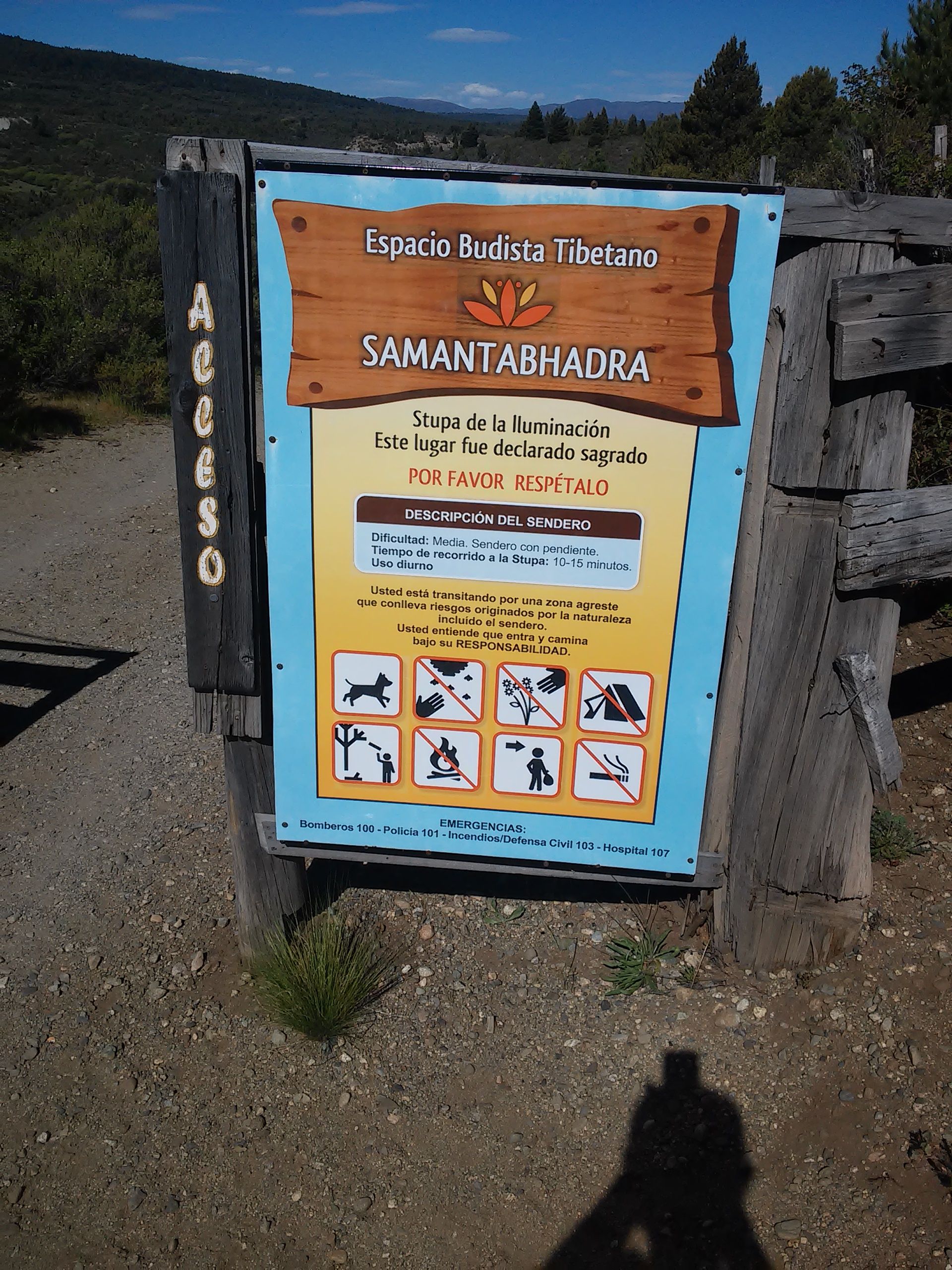
The Stupa is a Buddhist temple located in Epuyén which, in its original meaning, are geometrical representations of a spiritual state.
The project was dreamt up by a Nepalese lama who, after travelling around the world, found the exact place where to build the sanctuary.
Its location is in the depression of a valley, surrounded by mountains, and he had the cooperation of all the local inhabitants who saw the project completed at the end of 2011.
The shape is not a coincidence but is based on a true fact: according to historical accounts, the Buddha folded his robes and placed them under the bowl he used to eat. When one of his disciples asked him why he had done this, the Buddha replied that when someone wanted to remember him, he should do it that way.
It is noteworthy that both the habit and the bowl have a special significance in Buddhist conceptions.
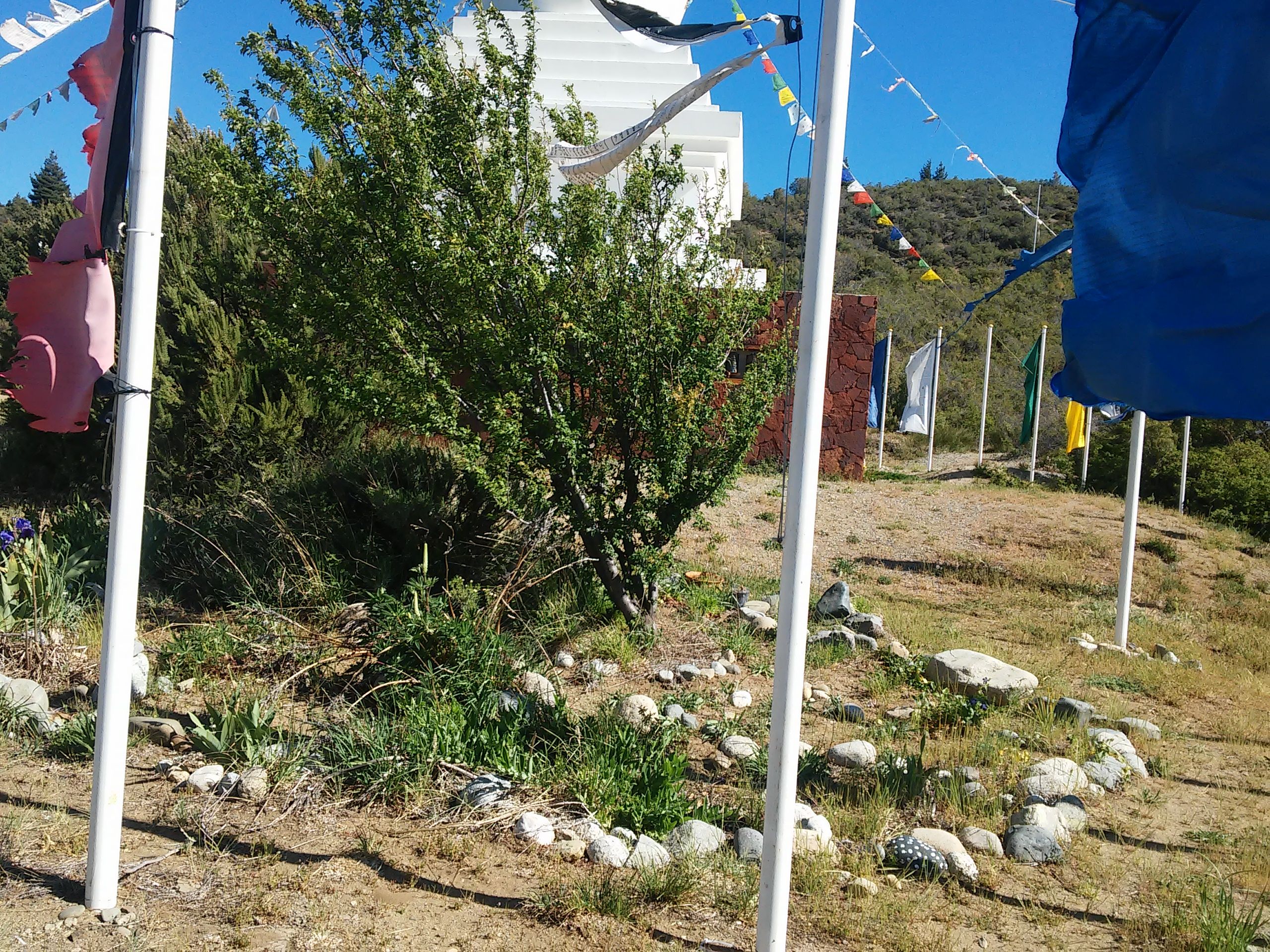
La Estupa es un templo budista situado en Epuyén que, en su significado original, son representaciones geométricas de un estado espiritual.
El proyecto fue soñado por un lama nepalí quien después de viajar por diversas partes del mundo encontré el lugar exacto donde construir el santuario.
Su ubicación es la depresión de un valle, rodeado por montañas y contó con la colaboración de todos los habitantes del lugar quienes a fin del año 2011 vieron terminado el proyecto.
La forma no es una casualidad sino que parte de un hecho verdadero: según relatos históricos el Buda dobló sus hábitos y los posó debajo del cuenco que usaba para comer. Cuando uno de sus discípulos le preguntó por qué había hecho eso, Buda le respondió que cuando alguien quisiera acordarse de él lo hiciera de esa manera.
Es de destacar que tanto el hábito como el cuenco tienen un significado especial en las concepciones budistas.

Samantabhadra, the stupa of Epuyén, has eight different facades, each of them recalling some of the stages in the life of the historical Buddha.
To understand the meaning of the name we must review some concepts of the meaning of some words in Buddhism. Where the word enlightenment takes on a special meaning.
Bodhisattva is a relevant figure in Buddhism. It is a compound word where Bodhi means mind and Sattva means being.
There are eight of these beings and one is Samantabhadra, which is the origin of this Buddhist sanctuary in the heart of Argentinean Patagonia, and it is through him that the most spectacular offerings to the enlightened mind are made.
Something like the primordial Buddha.
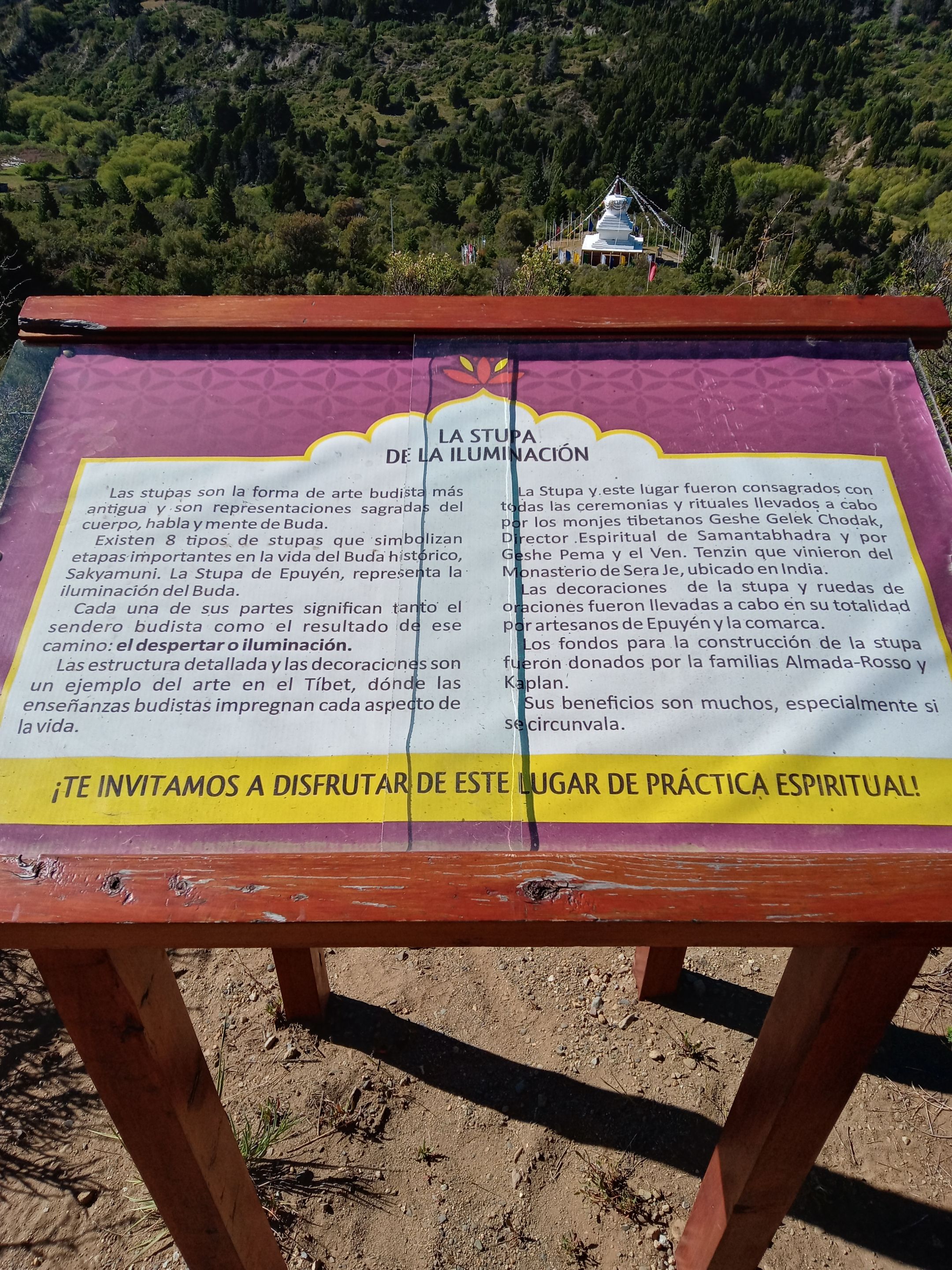
Samantabhadra, la estupa de Epuyén, tiene ocho fachadas distintas que rememoran cada una de ellas algunas de las etapas de la vida del Buda histórico.
Para entender el significado del nombre debemos repasar algunos conceptos del significado de algunas palabras en el budismo. Donde la palabra iluminación adquiere un significado especial.
Bodhisattva es una figura relevante en el budismo. Se trata de una palabra compuesta donde Bodhi significa mente y Sattva significa ser.
Hay ocho de estos seres y uno es Samantabhadra, que le da origen a este santuario budista en el corazón de la Patagonia argentina, y es a través del cuál se realizan los ofrecimientos más espectaculares a la mente iluminada.
Algo así como el Buda primordial.
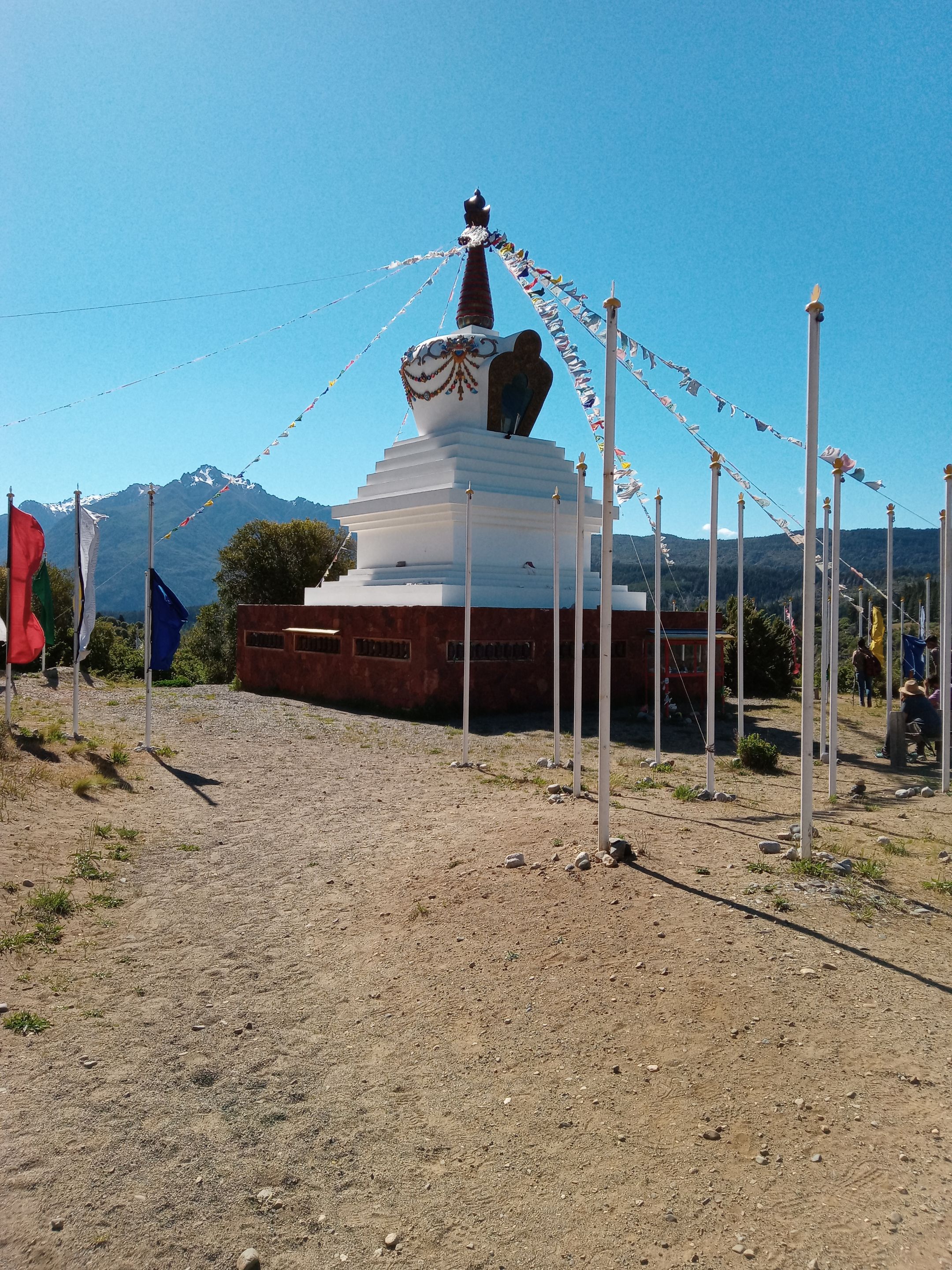
Stupas have a profound significance all over the world. They are energetically, historically and spiritually significant in the Buddhist conception.
When they are called "stupas of enlightenment", it is because they represent the very moment when Buddha attained enlightenment himself.
The Epuyén stupa is a 12-metre high shrine that was geometrically perfected after numerous attempts lasting three years.
It is in an area considered intangible, where there is no human intervention and where the work was all done manually, given the impossibility of reaching the site by mechanical means.
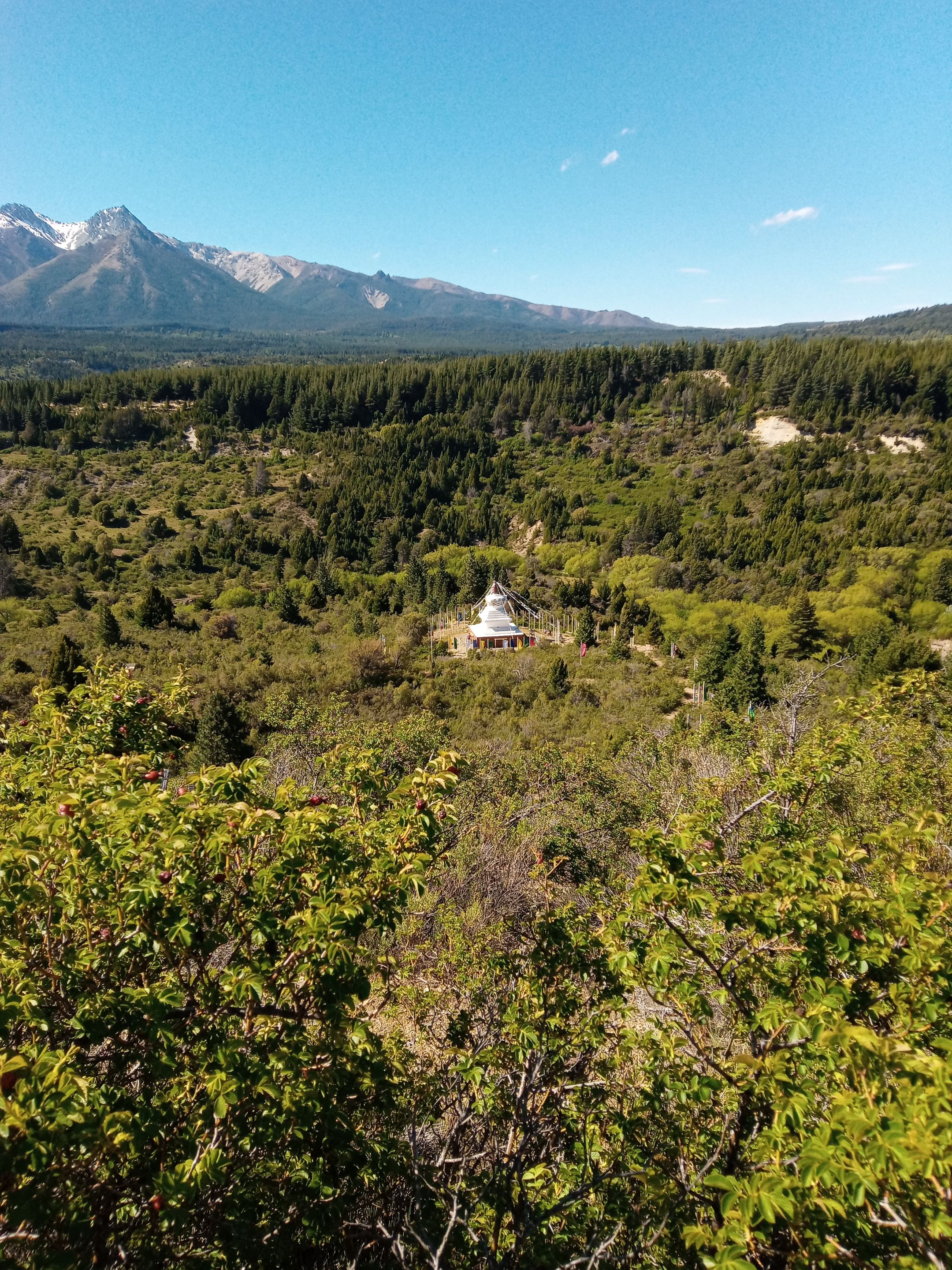
Las estupas tienen un profundo significado en todo el mundo. Y representan una carga energética, histórica y espiritual de notable importancia en la concepción del budismo.
Cuando reciben el nombre de "estupas de la iluminación" es porque representan el instante mismo en el que Buda alcanzó la iluminación propiamente dicha.
La estupa de Epuyén es un santuario que tiene 12 metros de alto y fue perfeccionada geométricamente luego de numerosos intentos que duraron tres años.
Está en un área considerada intangible, donde no hay intervención humana y donde los trabajos fueron efectuados todos en manera manual dada la imposibilidad de llegar al lugar con medios mecánicos.
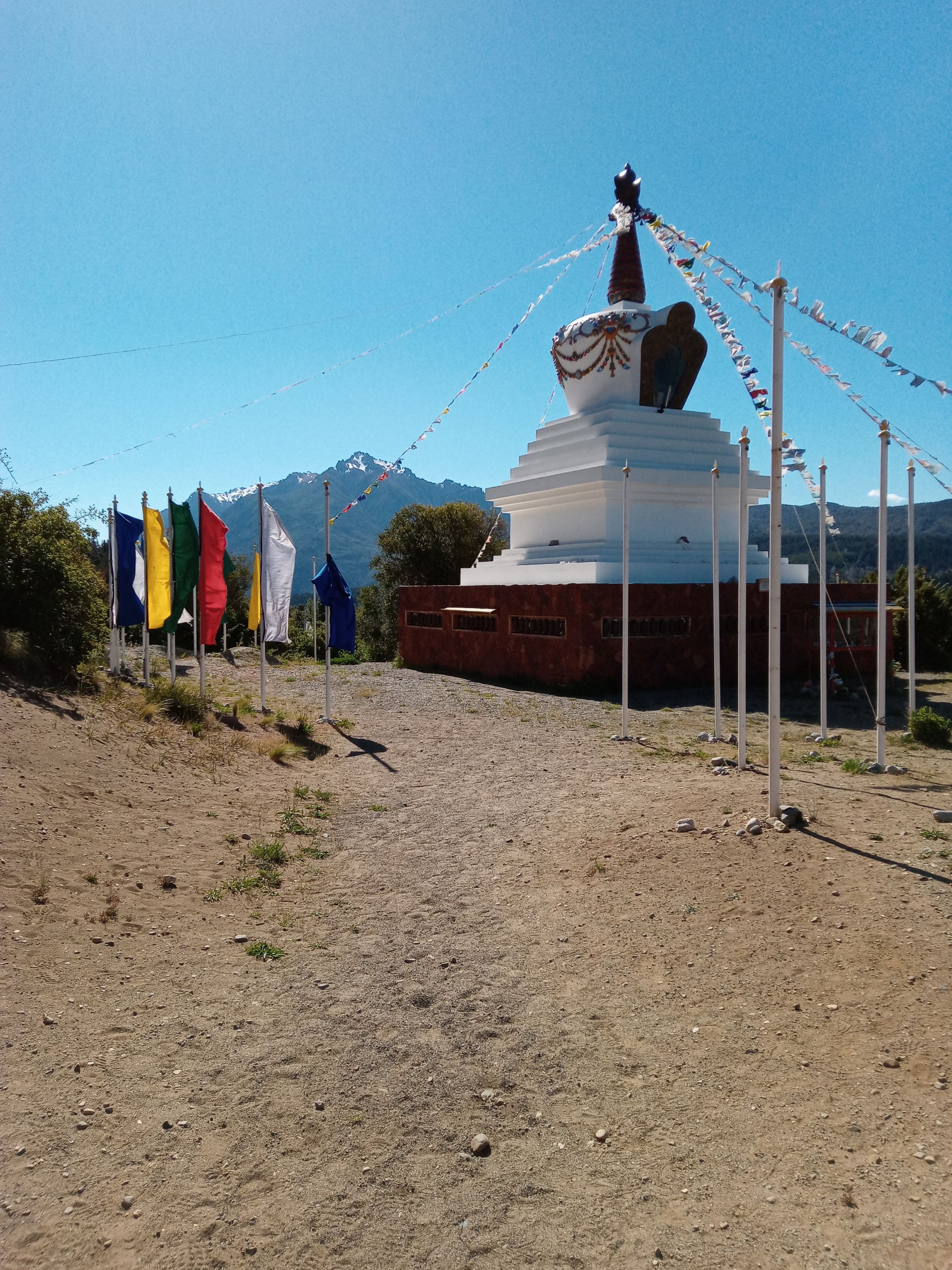
From an architectural point of view, stupas are hollow inside.
In fact, in ancient times, the mortal remains of heroes were placed inside them.
However, with the passing of generations of Buddhists, this concept changed.
According to the Western conception, heroes are those who, using some superpower, save humanity from annihilation. But within Buddhism, the concepts are not the same.
In a more modern concept of Buddhism, heroes are those people who have attained spiritual realisations, even if they have no super powers and have not contributed to saving humanity.
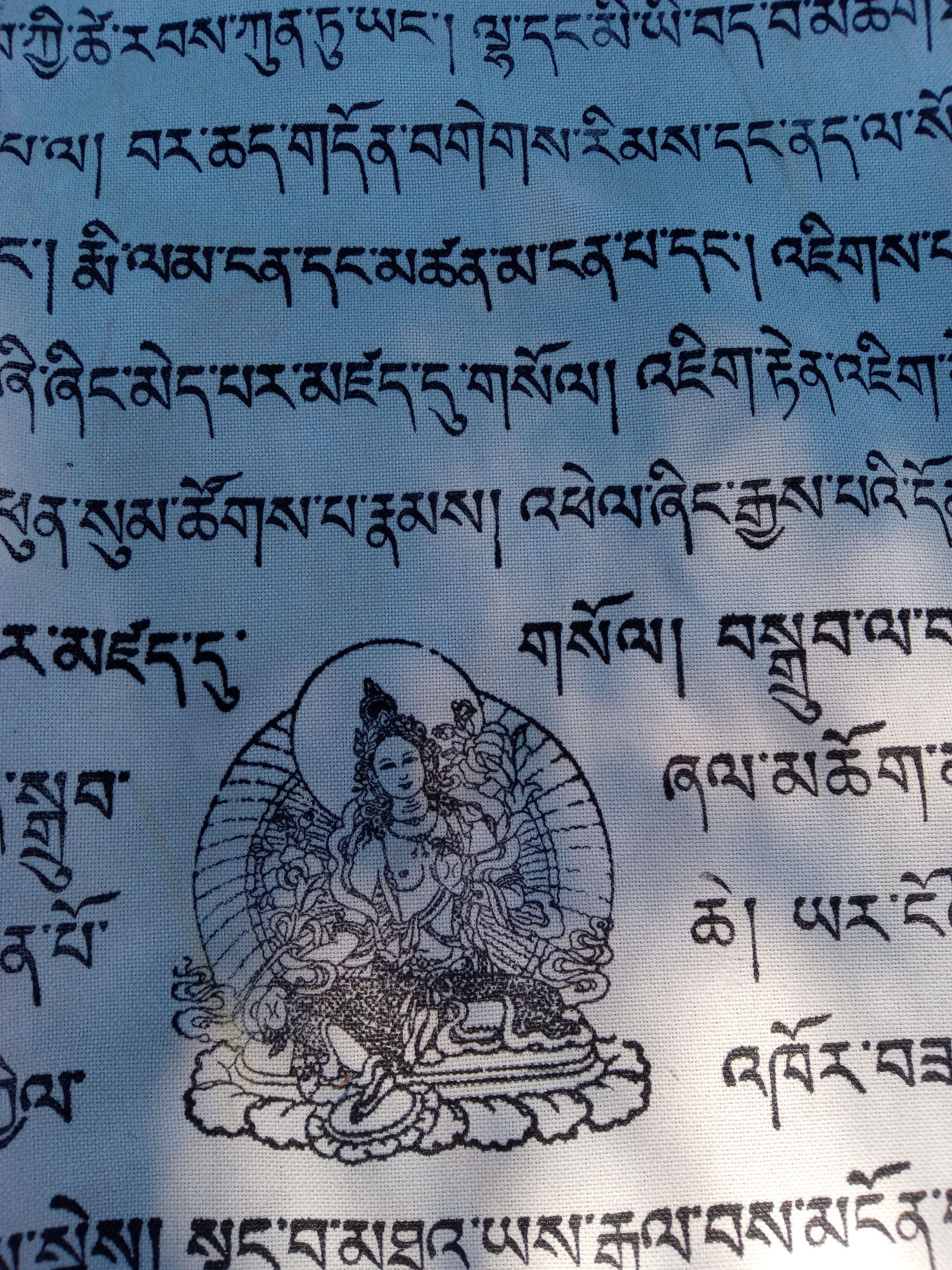
Desde el punto de vista arquitectónico las estupas son huecas en su interior.
De hecho, en la antiguedad, dentro de las mismas se depositaban los restos mortales de los héroes.
Sin embargo, con el pasar de las generaciones budistas, este concepto fue cambiando.
Según la concepción occidental, héroes son aquellos que, haciendo uso de algún súper poder, salvan a la humanidad de ser aniquilada. Pero, dentro del budismo, los conceptos no son iguales.
En un concepto del budismo más moderno los héroes son aquellas personas que han alcanzado realizaciones espirituales, aunque no tengan super poderes ni hayan contribuído a salvar la humanidad.
El lama nepalí que tuvo la inspiración para construirla contó durante su realización que en un monasterio de la India había tenido un sueño que le indicaba el lugar exacto donde debía ser construída esta estupa que debía llevar 108 ruedas de oraciones a su alrededor. De esta manera se transformaba en un catalizador de energías positivas.
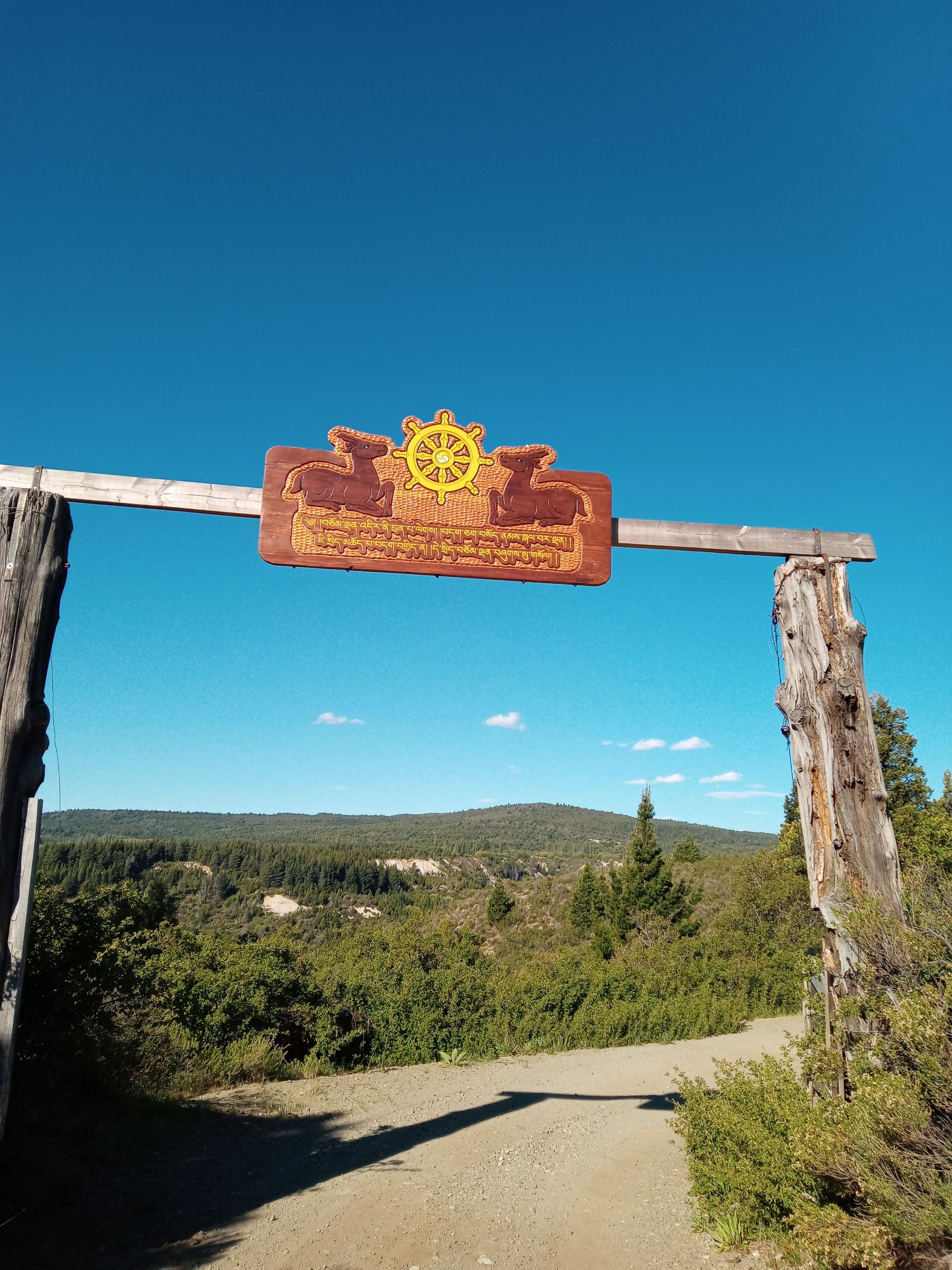
Mantra is a word that is widely used nowadays and whose meaning is associated with repetition.
However, it is an incomplete definition. These phrases, sounds or words must contain positive spiritual power in order to be defined as mantra.
That is why when the prayer wheels on each side of the shrine are turned, the mantra that is repeated is: 'May all beings cease to suffer'.
These wheels were built by local craftsmen one by one with great precision.
The texts of the stupas (in Sanskrit) came from Nepal. Every part of the stupa has a special meaning. Even the flags.
And here is another curious fact. By imposition of the Nepalese master, each of the 108 flags had to have a flagpole with prayers to diminish the impact of the elements and to create a particular harmony with the surrounding environment.
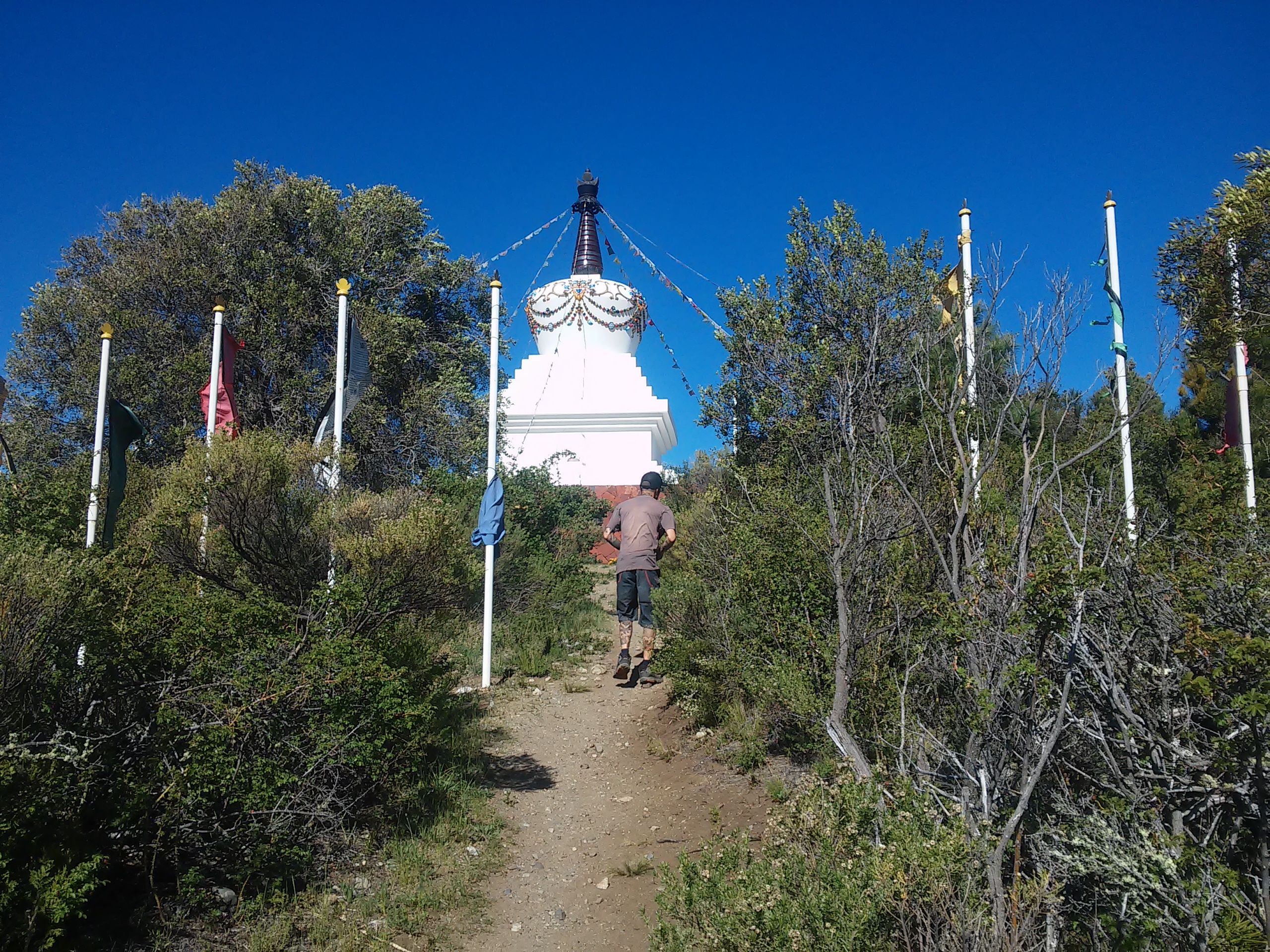
Mantra es una palabra muy usada en la actualidad y cuyo significado se amilia a una repetición.
Sin embargo es una definición incompleta. Esas frases, sonidos o palabras deben contener un poder espiritual positivo para que puedan ser definidas como mantra.
Por ese motivo cuando se hacen girar las ruedas de la oración que hay en cada cara lateral del santuario el mantra que se repite es: ‘Que todos los seres dejen de sufrir’.
Estas ruedas fueron construídas por artesanos locales una por una con mucha precisión.
Los textos de las estupas (en sánscrito) vinieron desde Nepal. Cada una de las partes de la estupa tiene un significado especial. Incluso las banderas.
Y aquí otro dato curioso. Por imposición del maestro nepalí cada una de las 108 banderas debía tener un mástil con oraciones para disminuir el impacto de los elementos y generar una armonía particular con el entorno que la rodea.
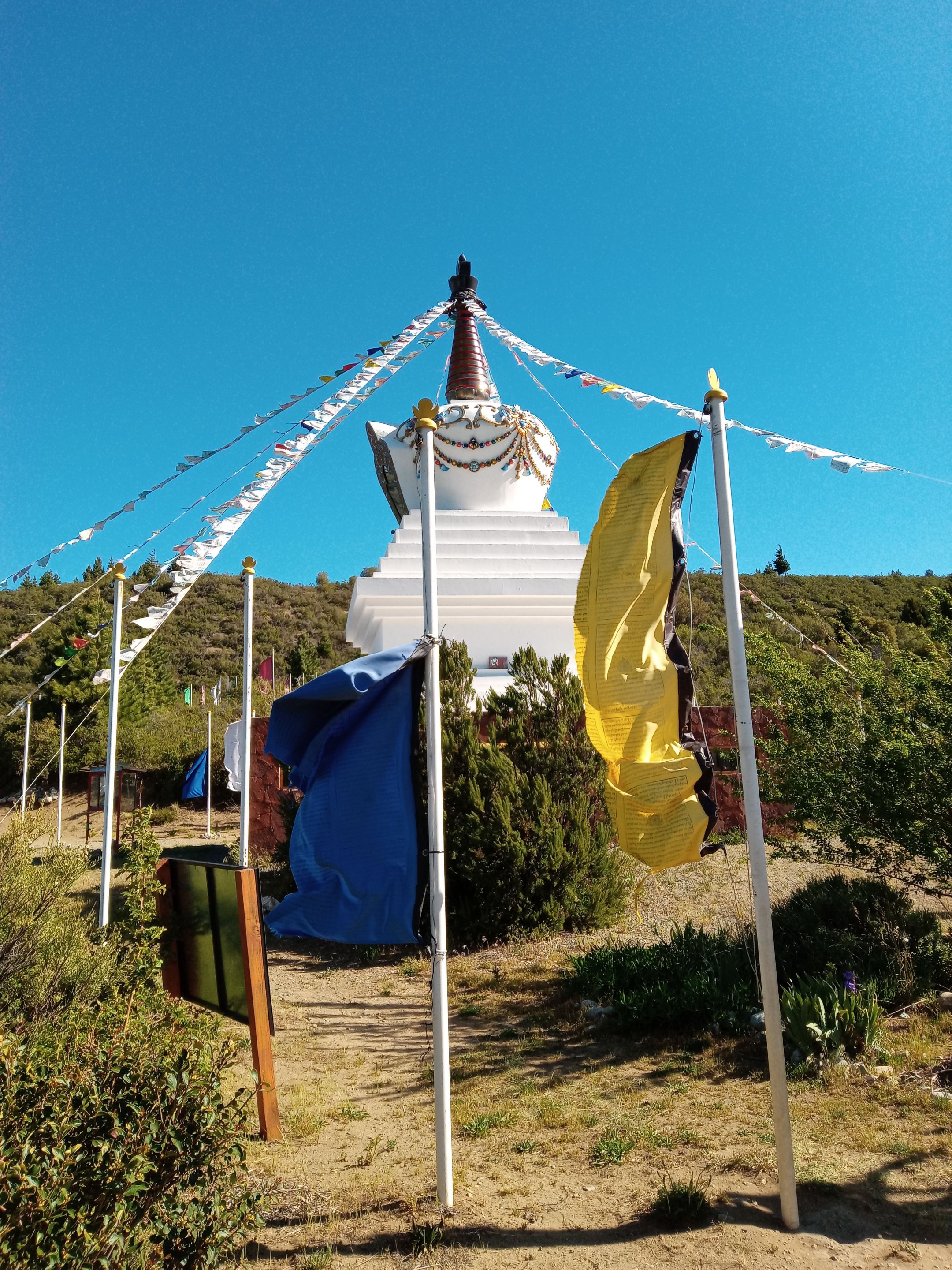
The idea of Samantabhadra, the stupa of Epuyén, is that people, Buddhist or not, can come and have a place of reference where they can freely go and be in contact with nature and their own spirituality to spend a moment of peace and tranquillity.
To share a sorrow or a joy, to solve a problem, to feel an inner and spiritual well-being.
And thus generate a vortex of energy that will affect us in a positive way.
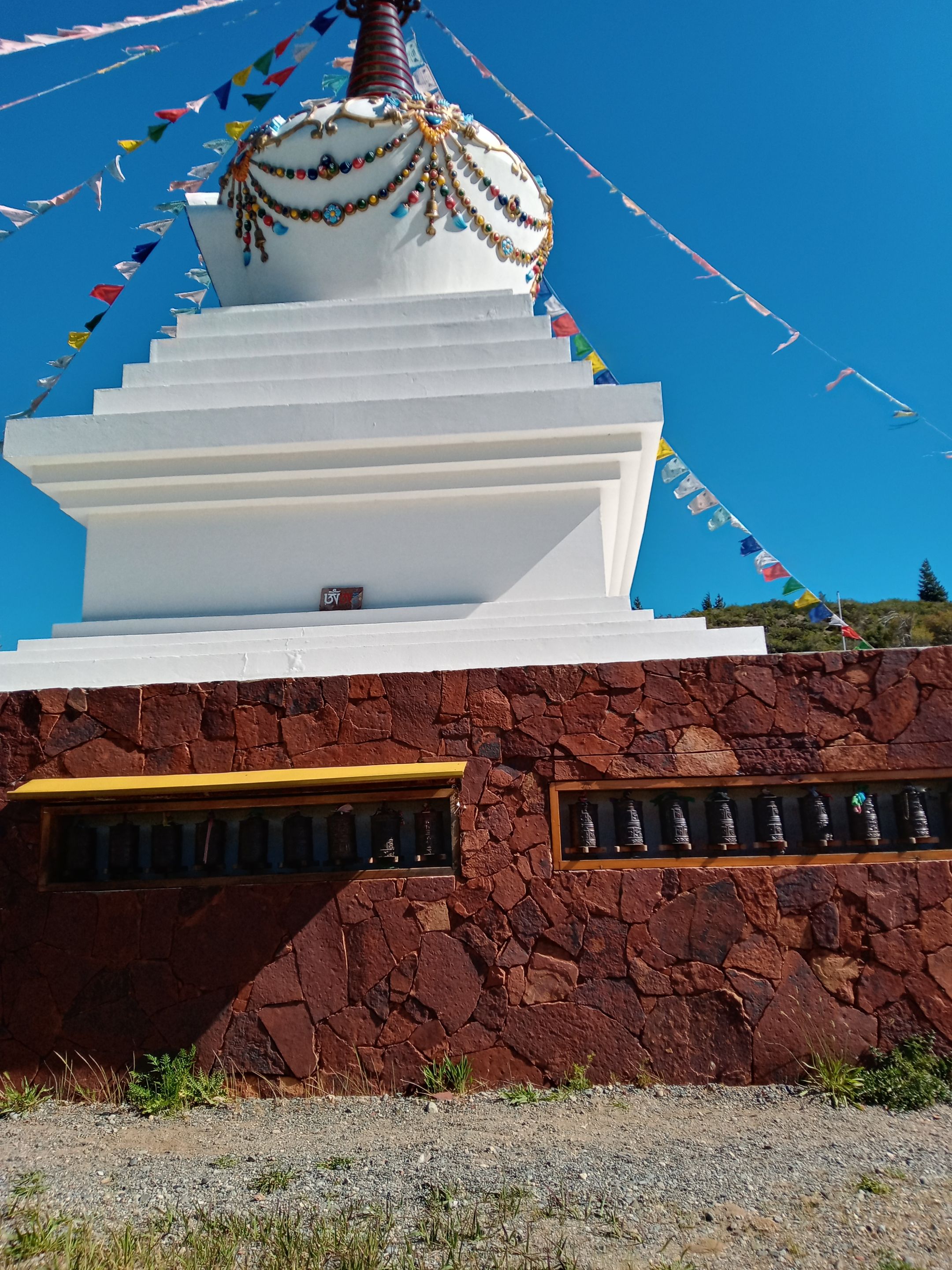
La idea de Samantabhadra, la estupa de Epuyén, es que la gente se acerque, sea o no budista, y tenga un lugar de referencia donde ir libremente y estar en contacto con la naturaleza y su propia espiritualidad para pasar un momento de paz y tranquilidad.
Para compartir un pena o una alegría, para resolver un problema, para sentir un bienestar interno y espiritual.
Y generar de esa manera un vórtice de energía que nos afectará de manera positiva.

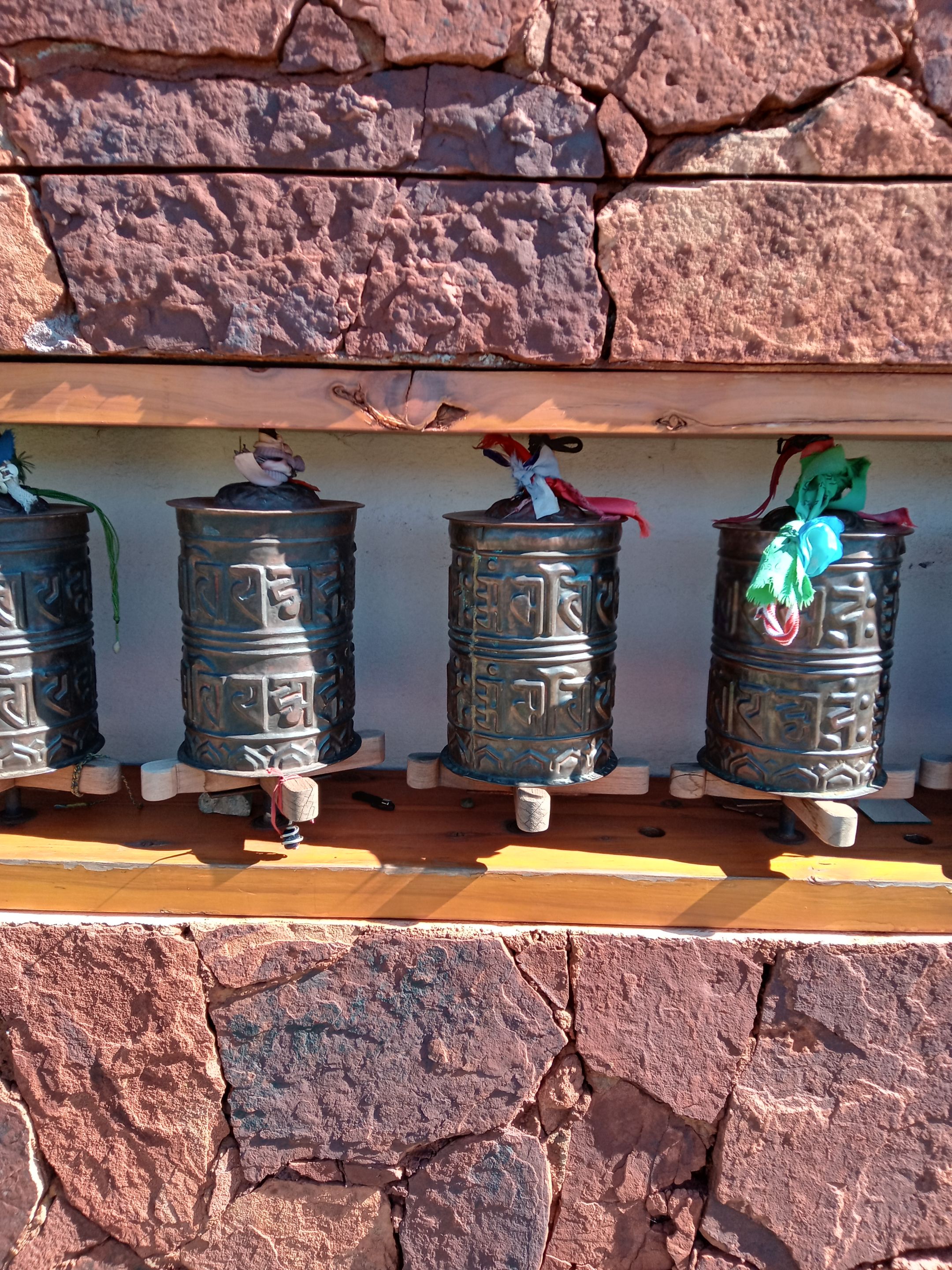 |  |
|---|---|
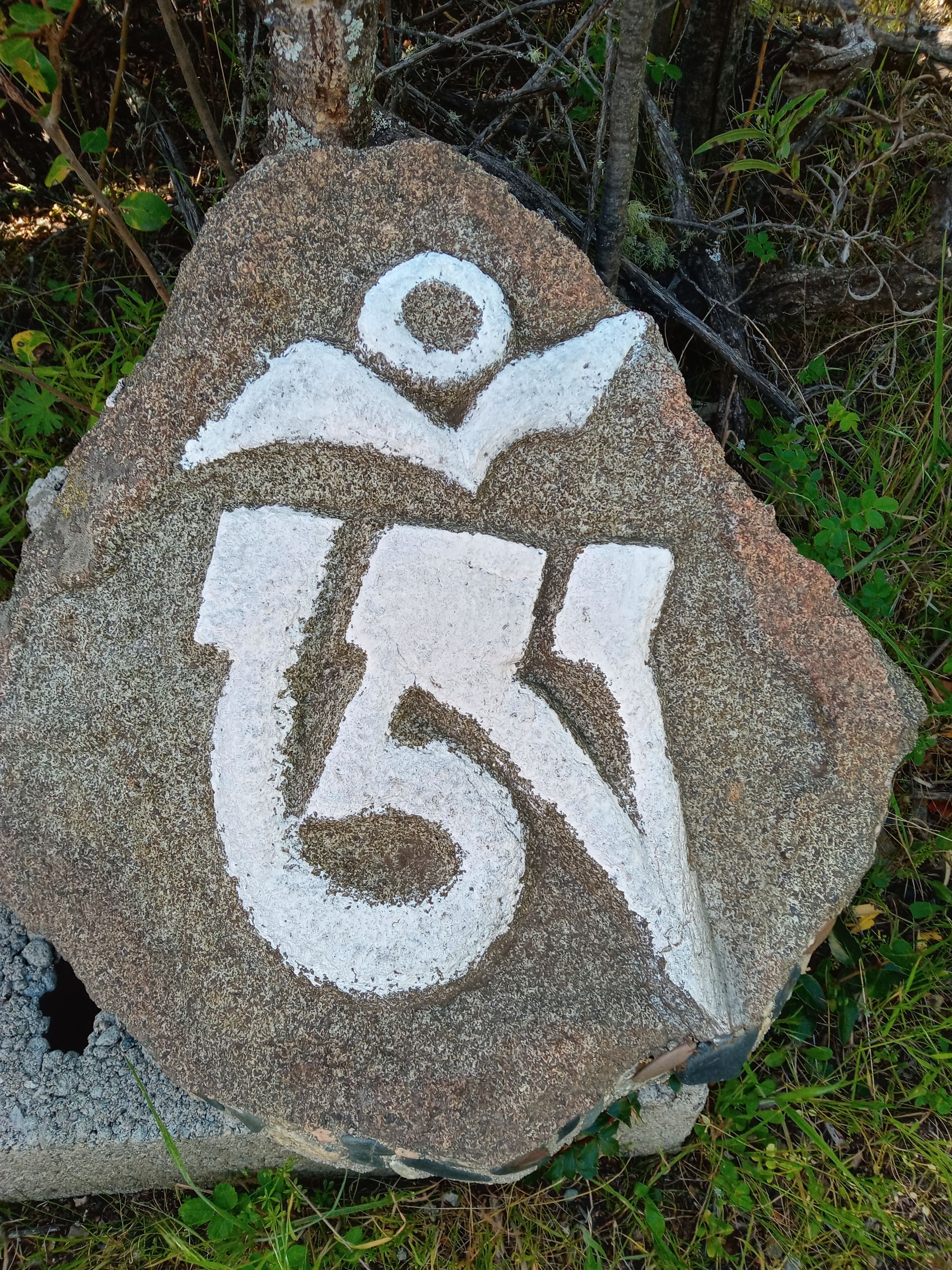 |  |
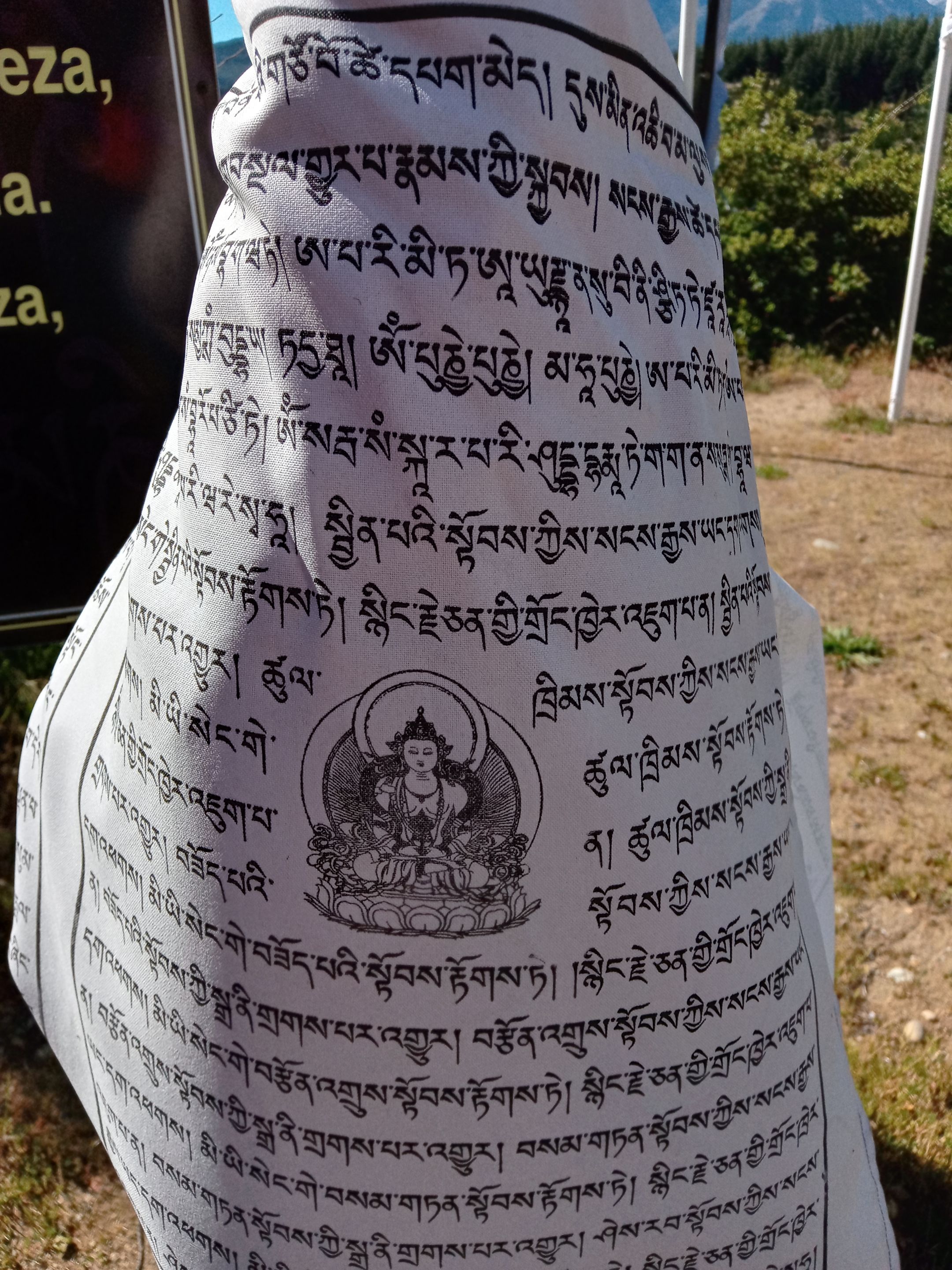 |  |
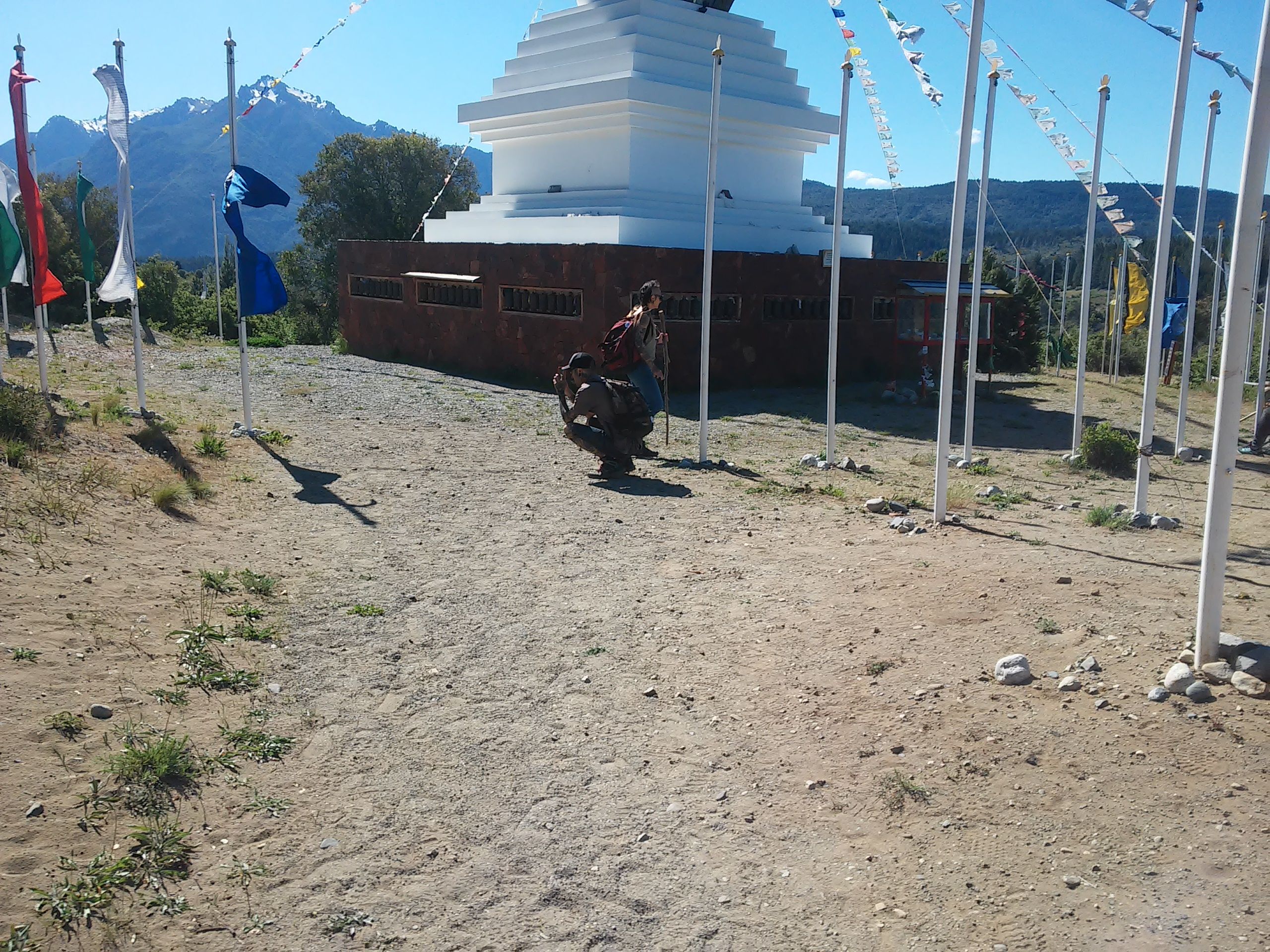


The lower part of the signature banner corresponds to the badget made by the @hivebuzz team. My thanks to them and in particular to @arcange
La parte inferior del banner de la firma corresponde al badget elaborado por el equipo de @hivebuzz. Mi agradecimiento a ellos y en particular a @arcange




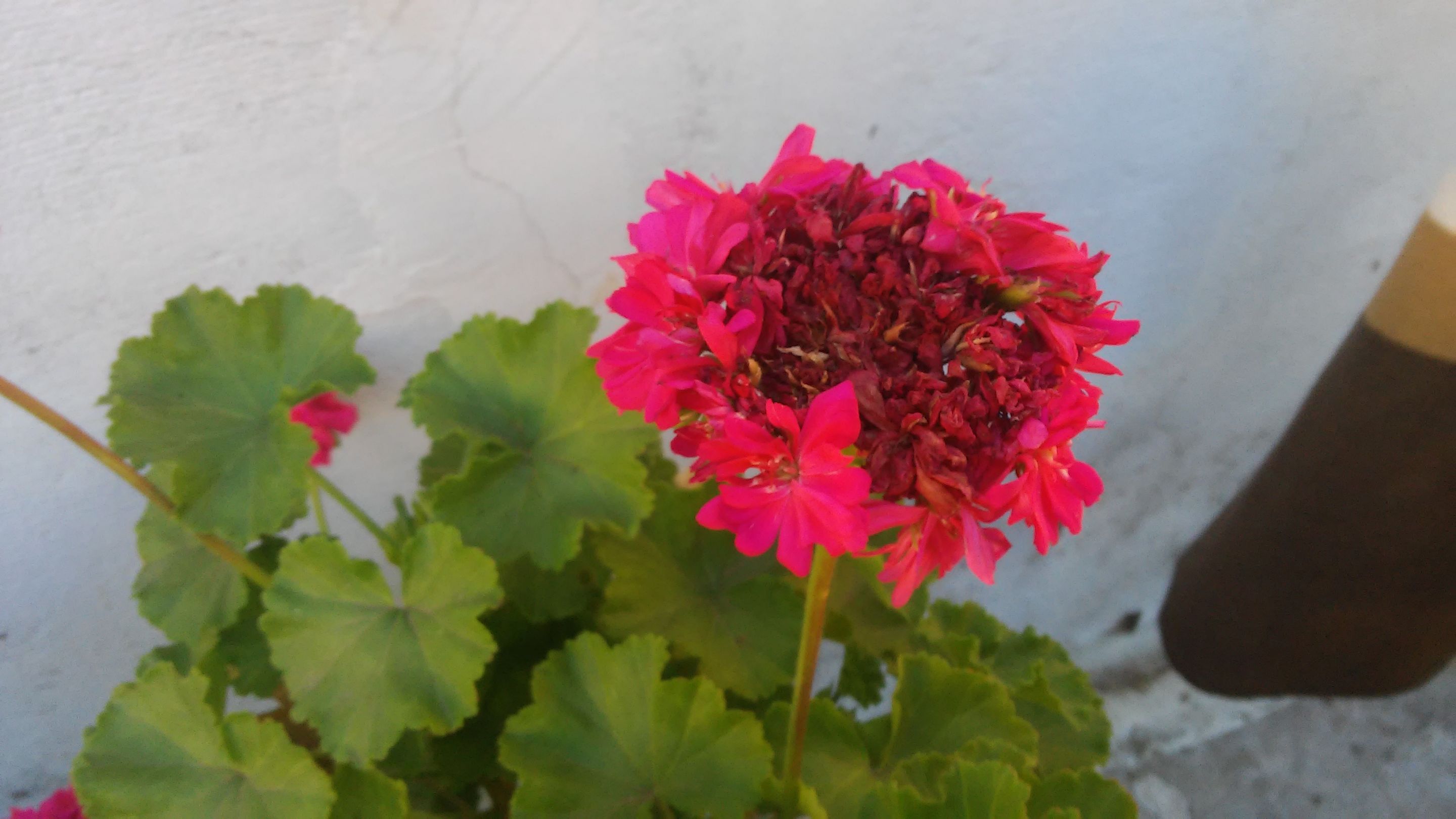





Comments